Explore the Top 18 Most Invasive Plants in Hawaii - A-Z Animals
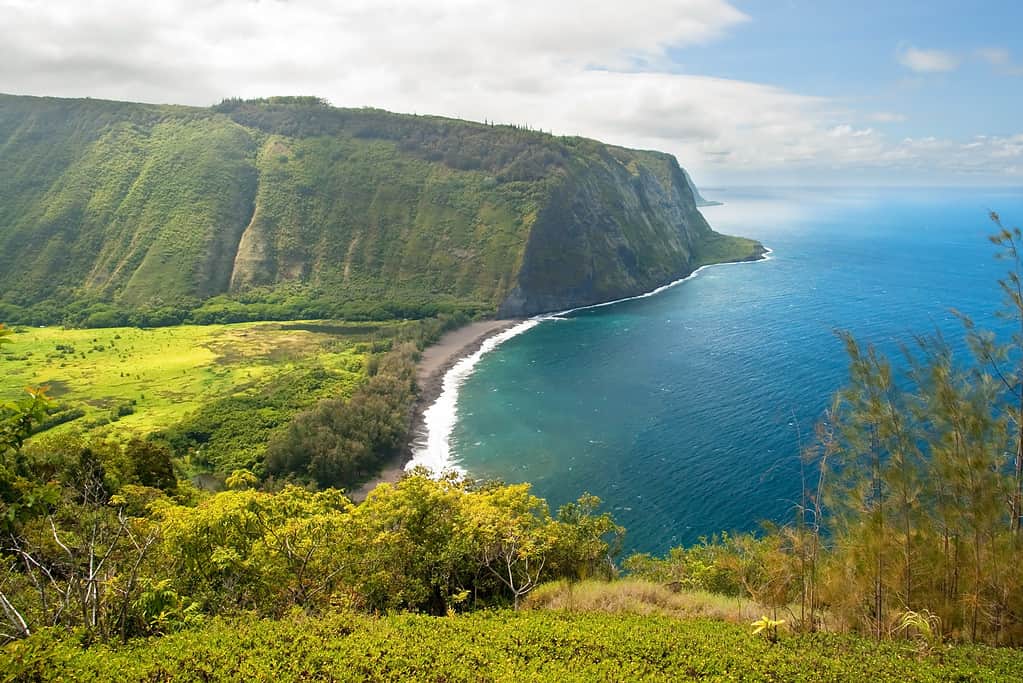
Hawaii is a lush tropical environment.
©Vacclav/iStock via Getty Images
Invasive plants in Hawaii are the leading cause of 18% of native plants becoming endangered. Plants not native to the area are growing in degraded wildlife habitats and increasing soil erosion. Invasive plants compete with native plant life for sun, water, and nutrients. The result of introducing invasive species into an ecosystem is an imbalance that puts the ecosystem in jeopardy.
How Did Invasive Species Arrive in Hawaii?
Non-native plants are introduced to a region in several ways. Hawaii’s main sources of invasive plant species are birds, small mammals, and humans.
- 60% of invasive plants result from home gardens where humans introduce the new plant.
- Birds and other wildlife spread the seeds of the invasive plants from the home garden to other locations.
- 30% of invasive plants are introduced to areas for conservation reasons. The plants are seeded in the areas after wildfires or to create windscreens.
- Soil ballasts on sailing ships can transport the seeds of invasive plant species across thousands of miles of ocean.
- Animal feed containing seeds to weeds introduces the weeds to new areas.
1) Asian Sword Fern

Nephrolepis brownii
©Sala Thongdee/Shutterstock.com
In Hawaii, Asian sword ferns and similar invasive plants spread swiftly, choking or suffocating native plants with extensive root systems. Asian sword fern is a native plant of Southeast Asia; however, it is invading the islands of Hawaii.
Asian sword ferns grow underground stems (rhizomes) that spread horizontally. Shoots sprout up laterally from the horizontal rhizomes. Each lateral shoot is called a frond and has five or six tufts on it. In Hawaii and Florida, Nephrolepis brownii has caused damage to local plant life. In these states, the Asian sword fern presence is a critical situation.
2) Banana Poka

Passiflora Mollisima
©photoJS/Shutterstock.com
Invasive plants in Hawaii, like the banana poka, are fast-growing vines. The banana poka has beautiful pink flowers. Elongated fruit grows on the vine, and each piece of fruit has hundreds of seeds inside. The vines of Passiflora mollisima aggressively climb trees and shrubs. When the vine takes hold, it chokes the host plant, and the host plant dies.
Feral pigs and birds eat the fruit and transfer the seeds to other areas in their scat. At this time, the banana poka is widespread on Maui, the big island, and Kauai.
3) Black Wattle
Hawaii’s Black Wattle and similar invasive plants are on the noxious weed list. A black wattle is a fast-growing tree. It grows so quickly that it threatens native habitats by competing with indigenous vegetation.
Acacia mearnsii has distinctively large yellow flower clusters that are light yellow or cream. However, the seeds are encased in brown fruit pods. This species is native to Tasmania and Australia.
4) Cane Tibouchina

Tibouchina Herbaceae
©lucasfaramiglio/Shutterstock.com
Invasive plants in Hawaii, such as the cane tibouchina, disturb forests by displacing native plants. This plant is native to Brazil and Uruguay. Since being introduced to Hawaii, it has infested Maui and the big island.
Tibouchina herbaceae grows to be 9′ tall. They produce small fruits that are loaded with seeds. Thus, birds and small animals eat the fruit and spread the plant’s seeds to new areas, forming dense stands and competing with native plants for available nutrients in the soil.
5) Christmas Berry

Schinus terebinthifolia
©Nathalia F.G/Shutterstock.com
Christmas berry and other invasive plants in Hawaii cost the state and federal agencies millions each year trying to eradicate or slow their spread. Schinus terebinthifolia is native to Brazil, Argentina, and Paraguay.
This plant species causes narcotic effects in birds and animals that ingest it. Their beautiful red berries look appealing to birds and animals; however, in many instances, they are toxic.
6) Cotoneaster
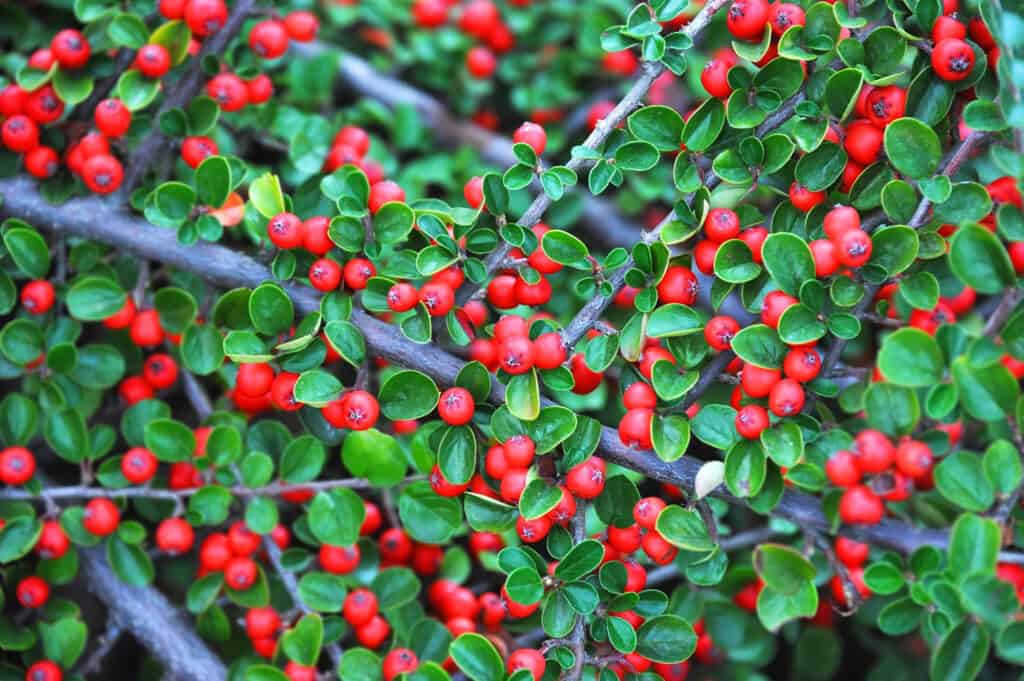
The Cotoneaster Pannosus
©Unkas Photo/Shutterstock.com
Invasive plants in Hawaii, like the Cotoneaster, thrive on the big island and Maui. The plants grow to be 15′ tall. They have multiple stems, and each tiny berry has three seeds inside. Cotoneaster pannosus is native to southwestern China and the Himalayas.
However, this plant species is wreaking havoc on Hawai’i Island and Maui. The plant seeds germinate quickly, even in areas of dense shade.
7) Devil Weed
Devil weed, among other invasive plants in Hawaii, can survive in diverse areas; however, devil weed wilts in the shade. Each plant grows to a height of 12′. One plant produces 800,000 seeds a year. Moreover, the seeds are small and cling to clothing, animal fur, shoes, tires, and anything that comes into contact with them.
Chromolaena odorata is growing in Oahu and Kahana Valley. This plant is very aggressive and quickly chokes out other vegetation in the area where it becomes established.
8)Fire Tree
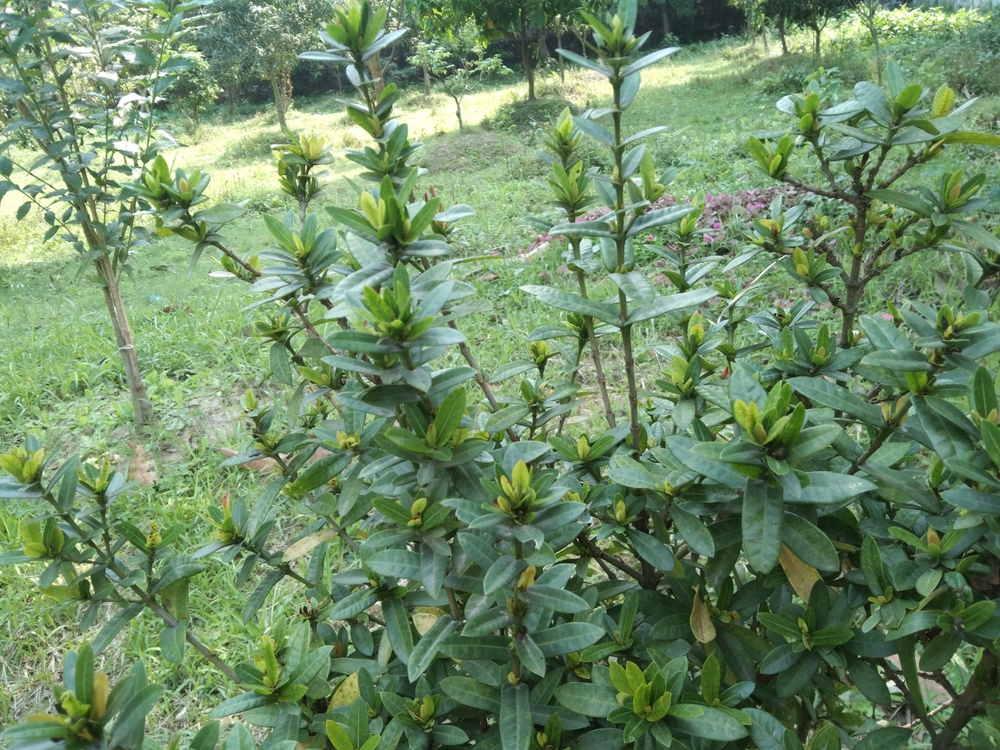
Morella Faya
©Sajib_Stock_Designs/Shutterstock.com
Invasive plants in Hawaii, like the fire tree, can change soil chemistry. The plant increases the nitrogen levels found in the soil. This increase is toxic to native species, so the species near the fire tree plants are endangered.
On the big island, hundreds or acres are infested with morella faya. Portuguese laborers introduced this plant species to Hawaii in the 1800s. It is native to the Canary Islands and Madeira.
9) Florida Blackberry

Rubus Argutus
©iStock.com/syaber
Like the Florida blackberry, edible invasive plants in Hawaii create dense, impenetrable thickets. Nonetheless, the berries are edible; animals and birds eat them, carrying the seeds away to deposit them in other areas. However, the berry vines become so thick that visitors, hikers, and hunters cannot move through them.
These berries are present on Molokai, Kauai, and Oahu.
10) Fountain Grass

Pennisetum Setaceum
©Joe Kuis/Shutterstock.com
Ornamental invasive plants in Hawaii, like the Fountain Grass, grow in areas that are made up of bare lava; however, they also grow along urban highways. People brought fountain grass to Hawaii as a decorative plant for their lawns and gardens. The dried leaves of fountain grass spread fire rapidly.
Fountain grass is native to northern Africa and western Asia. However, this ornamental plant has been introduced to many countries. On the Kona side of the big island, 200,000 acres are infested with this invasive plant species.
11) Glory Bush
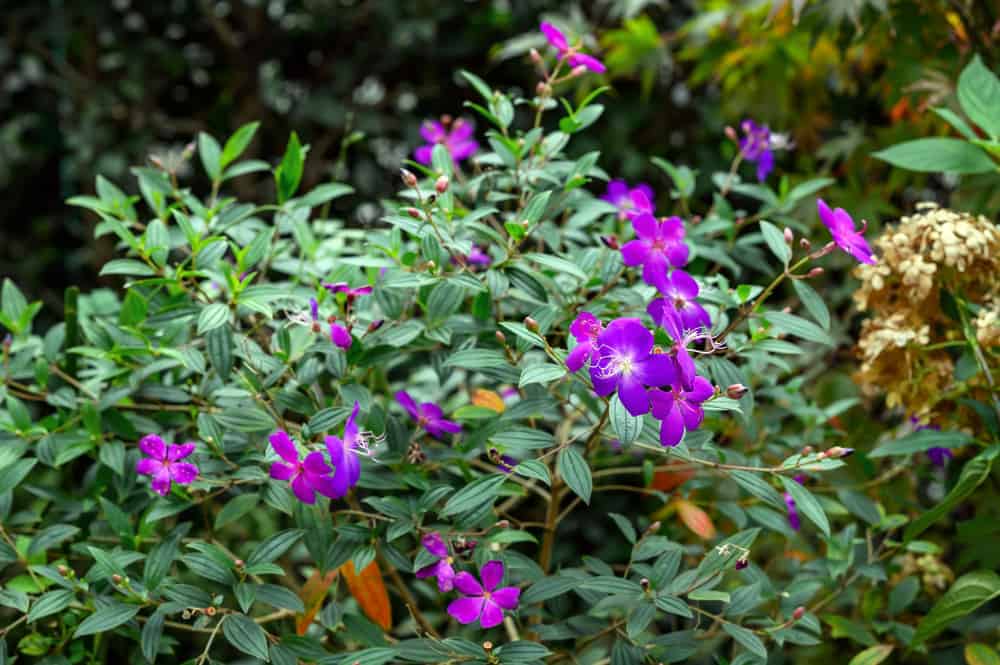
Tibouchina Urvilleana
©PAUL ATKINSON/Shutterstock.com
The Glory Bush and other invasive plants in Hawaii have appealing flowers that make the plant look sweet or gentle. However, the plants are aggressive invaders that outcompete and displace the indigenous species, leaving the ecosystem unbalanced.
There are 350 species in the Tibouchina family. Conversely, all of those species are declared noxious weeds in Hawaii. It is illegal to sell these plants in Hawaii; however, people still have them in their private gardens. If you have the glory bush planted in your garden, the Oahu Invasive Species Committee will remove the plant for you and replace it with a native plant species that can benefit the environment.
12) Himalayan Ginger
Invasive plants like the Himalayan ginger in Hawaii are problematic because they quickly grow thick enough to smother the forest floor. Himalayan ginger is among the world’s 100 most invasive plant species. The rhizomes of this plant create dense mats. It is impervious to shade and grows well under the cover of taller plants and trees.
Himalayan ginger is native to the eastern portion of the Himalayas and the northern portion of Asia. Nonetheless, the plant is aggressive. However, it has natural enemies like the conspicuous weevils from the genus Metaprodictes that can reduce its ability to spread.
13) Ivy Gourd
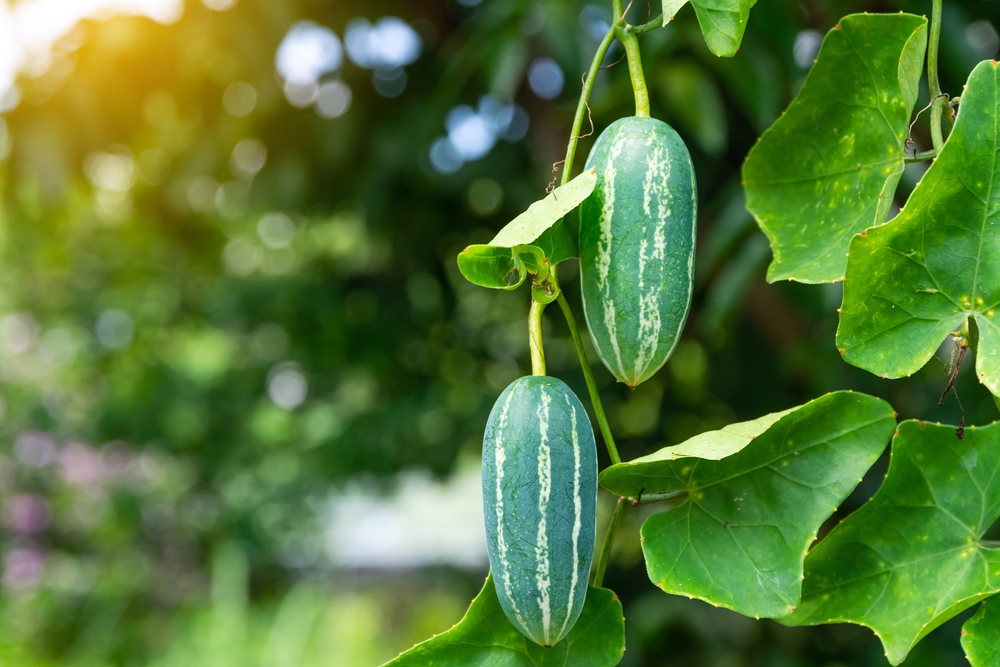
Coccinia Grandis
©YuRi Photolife/Shutterstock.com
Like the ivy gourd, invasive plants in Hawaii are vines that grow quickly and smother trees, covering powerlines and fences. Herbicides are useless in the fight against the vines because the plant has deep roots impervious to the topical herbicides. Like the kudzu vines in Georgia, the ivy gourd can grow four or more inches each night.
The ivy gourd is native to Australia and Africa. It has invaded Molokaʻi, the big island, and Maui.
14) Koa Haole
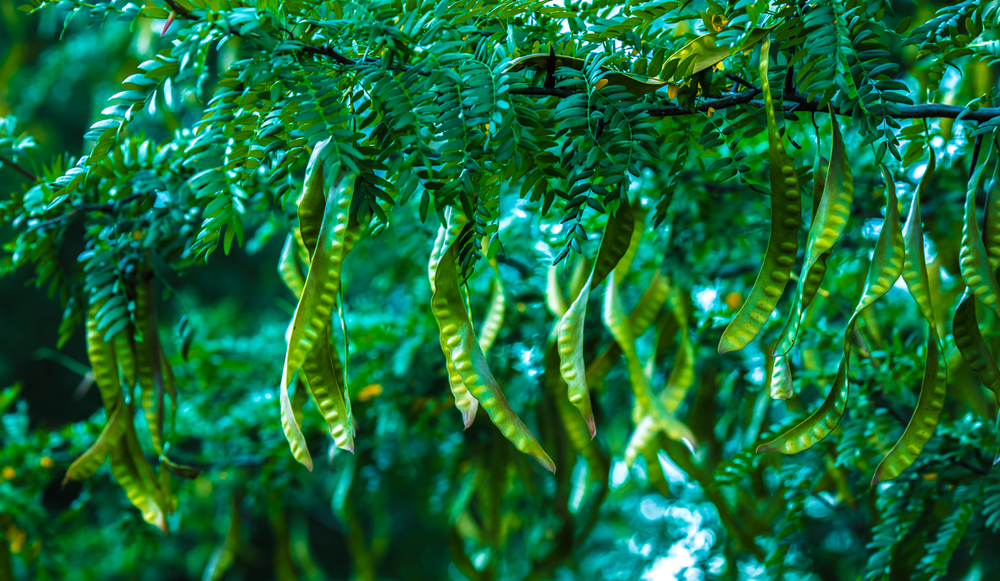
Leucaena
©K.E.V/Shutterstock.com
Invasive plants in Hawaii, like the Koa Haole, have some useful properties. Koa haole is edible when the leaves and stems are young and tender, making excellent charcoal. However, no matter how useful the trees are, they are still invasive because they are not indigenous to the areas where they are growing.
15) Long-thorne Kiawe

Prosopis Juliflora
©Sanjiv Shukla/Shutterstock.com
Long-thorne Kiawe is an invasive plant in Hawaii with damaging thorns so long and thick that they can pierce rubber boots and vehicle tires. The ends of the thorns are poisonous and cause severe bruising and swelling if they puncture your skin.
These plants are native to the Caribbean and South America. Although the first appearance of the long-thorned Kiawe in Hawaii occurred in 1978, Since then, it has invaded the beaches of Māhā’ulepū, among other islands and locations. When this species establishes itself in a coastal area, it limits access to beaches and strangles native plants.
16) Miconia
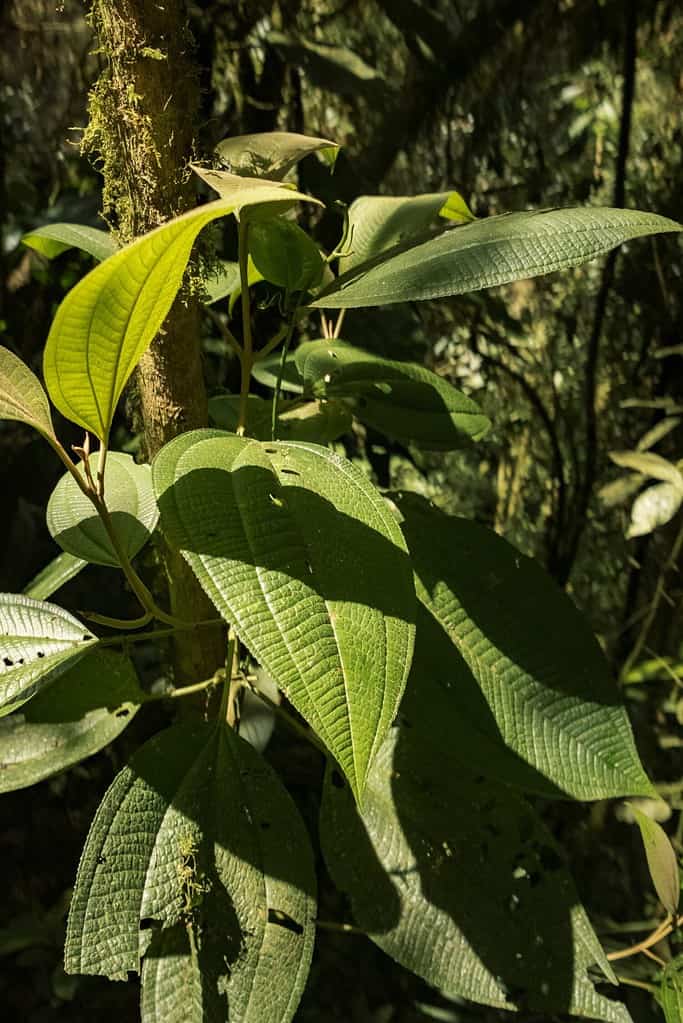
Miconia Calvescens
©cineG/Shutterstock.com
Miconia are invasive plants in Hawaii that have large leaves. The plant can grow up to 50′ tall, and the large leaves allow it to shade the native plants and deprive them of sunlight and nutrients. Seeds from the plant are the size of a grain of sand. The seeds easily attach to clothing, feathers, and fur, so any creature that moves around under the plants will transport the seeds away when they leave.
It has wide green leaves; however, the bottom side of the leaves is purple. This plant is native to South and Central America. However, it was introduced to Maui in the early 1970s as a decorative item. A local plant shop started selling the plants, and soon the infestation began.
17)Mysore Raspberry
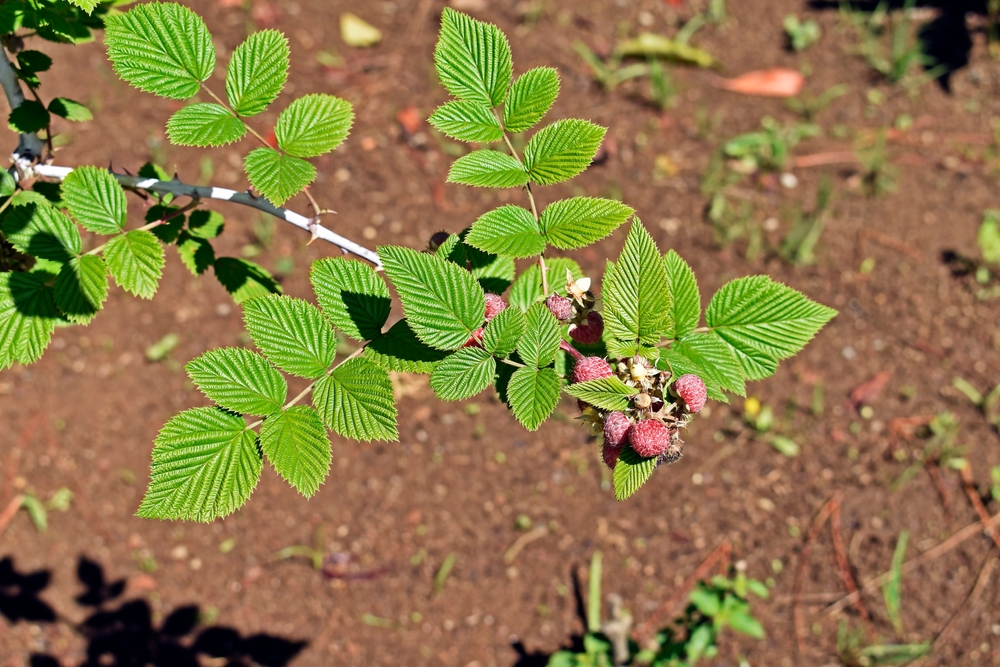
Rubus Niveus
©Wagner Campelo/Shutterstock.com
In Hawaii, invasive plants that bear edible fruit and berries create dense, impenetrable thickets that deprive native plants of nutrients and space to grow. The native regions of Mysore raspberry plants are southeast Asia and India. However, people who wanted to grow them in their backyard gardens for edible treats brought them to Hawaii.
They produce a lot of seeds; moreover, the seeds can lie dormant in the soil for seven years until the environment is perfect for them to grow and thrive.
19)Plume Poppy
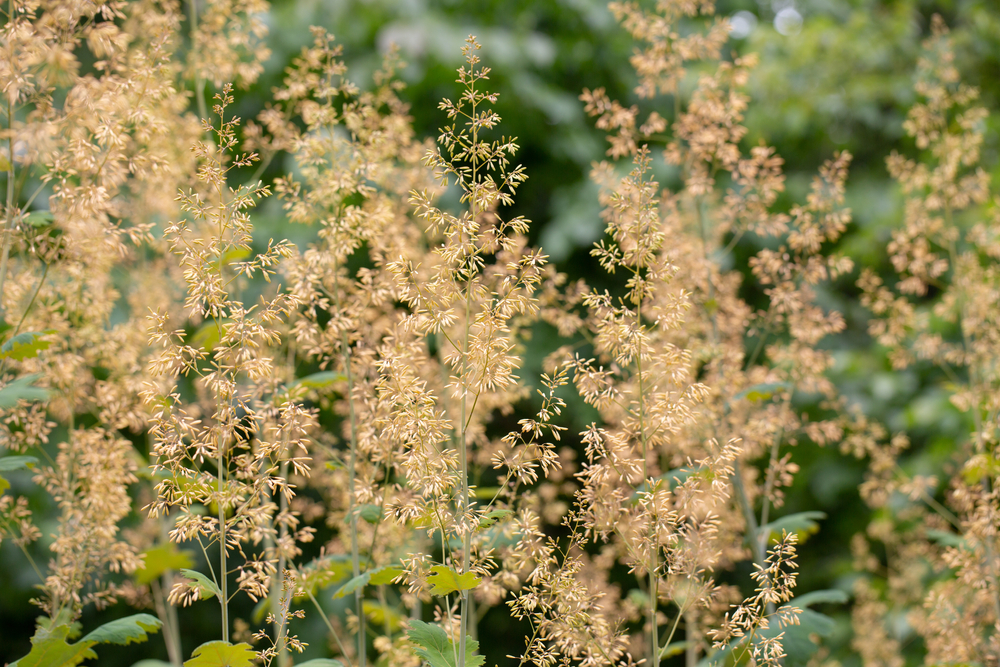
Bocconia Fruitscens
©Traveller70/Shutterstock.com
Plume poppy plants are invasive plants in Hawaii that are native to South America. The plume poppy can grow to be 20′ tall. They ingressively invade dry forests, and each plant produces thousands of seeds. Birds are attracted to plants and numerous seeds, so they spread the plant long distances from where it is already established.
Final Thoughts
Preventing invasive plants from becoming established in Hawaii or anywhere in the world requires residents to plant and cultivate native plants. Leave invasive and exotic ornamental plants out of your gardens. Your world requires you to leave ecosystems in their natural state.
Summary of The Top 18 Most Invasive Plants in Hawaii
| Plant | Scientific Name | |
| 1 | Asian Sword Fern | Nephrolepis brownii |
| 2 | Banana Poka | Passiflora Mollisima |
| 3 | Black Wattle | Acacia Mearnsii |
| 4 | Cane Tibouchina | Tibouchina Herbaceae |
| 5 | Christmas Berry | Schinus terebinthifolia |
| 6 | Cotoneaster | Cotoneaster Pannosus |
| 7 | Devil Weed | Chromolaena Odorate |
| 8 | Fire Tree | Morella Faya |
| 9 | Florida Blackberry | Rubus Argutus |
| 10 | Fountain Grass | Pennisetum Setaceum |
| 11 | Glory Bush | Tibouchina Urvilleana |
| 12 | Himalayan Ginger | Hedychium Gardnerianum |
| 13 | Ivy Gourd | Coccinia Grandis |
| 14 | Koa Haole | Luecanea |
| 15 | Long-thorne Kiawe | Prosopis Juliflora |
| 16 | Miconia | Miconia Calvescens |
| 17 | Mysore Raspberry | Rubus Niveus |
| 18 | Plume Poppy | Bocconia Fruitscens |
The photo featured at the top of this post is © Nathalia F.G/Shutterstock.com









